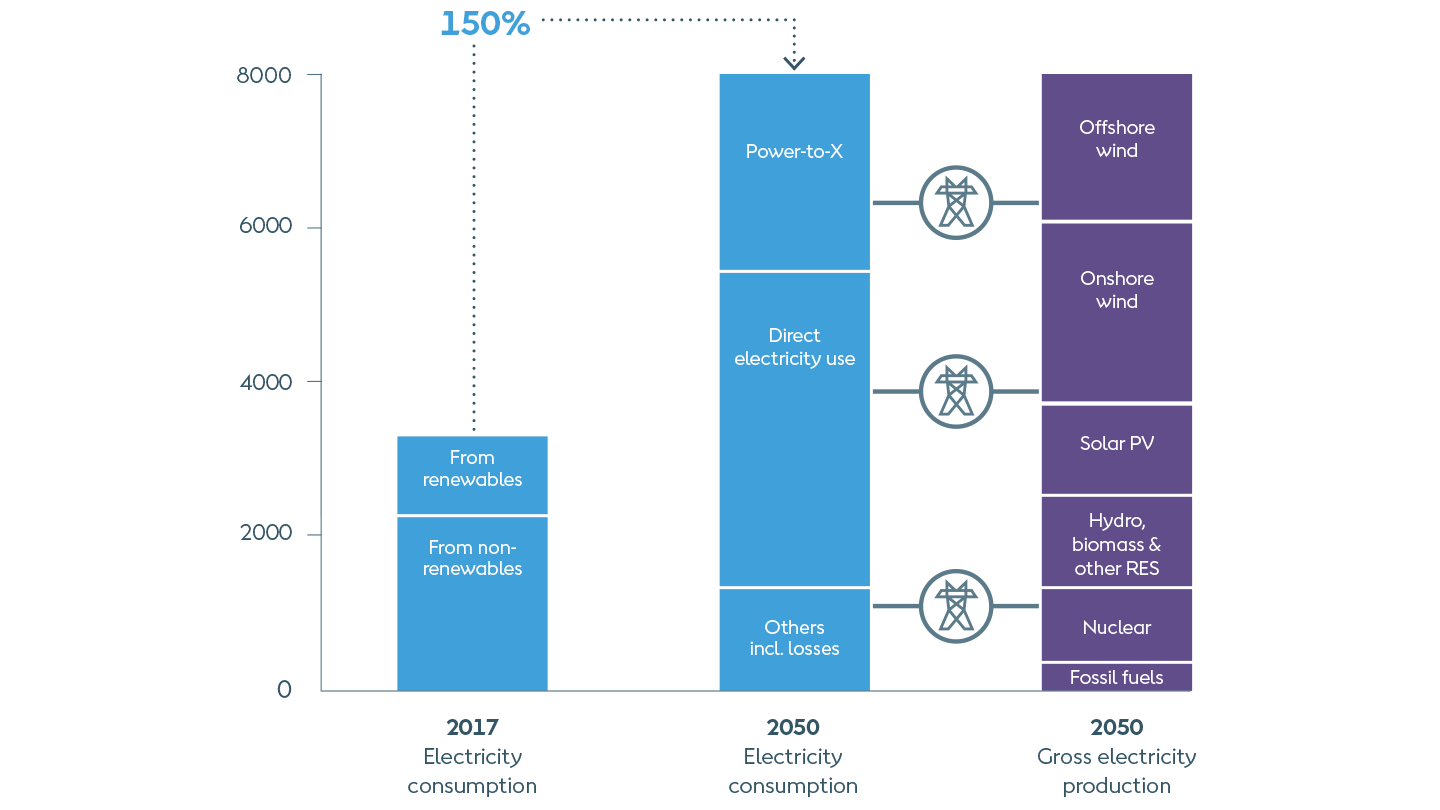Our energy system is rapidly undergoing a revolution. Over the past decade, renewable energy from new wind turbines and solar panels has become cheaper than fossil fuel-based energy. And, in some markets, it’s cost-competitive with existing fossil fuel generation.
This is hopeful news. With energy consumption causing almost three quarters of global greenhouse gas (GHG) emissions, decarbonising our energy system, starting with electricity, can make or break any effort to limit global warming to 1.5 °C.
Declining costs mean that wind turbines and solar PV will form the backbone of the future green energy system. This is reflected by leading analytical institutions’ expectations of the share of wind and solar needed to decarbonise global energy supply, in line with the Paris Agreement.
For instance, by 2050, IRENA projects that solar and wind need to make up 63 % of global power generation. IEA’s Sustainable Development Scenario points to 60 % solar and wind by that same year – with an even higher 67 % in its Paris Agreement-compatible net-zero scenario. And BloombergNEF expects that 39 % to as much as 84 % of global generation from sun and wind is needed by 2050. The bottom line: The amount of wind and solar power will be significantly higher than it is today, across all scenarios.
